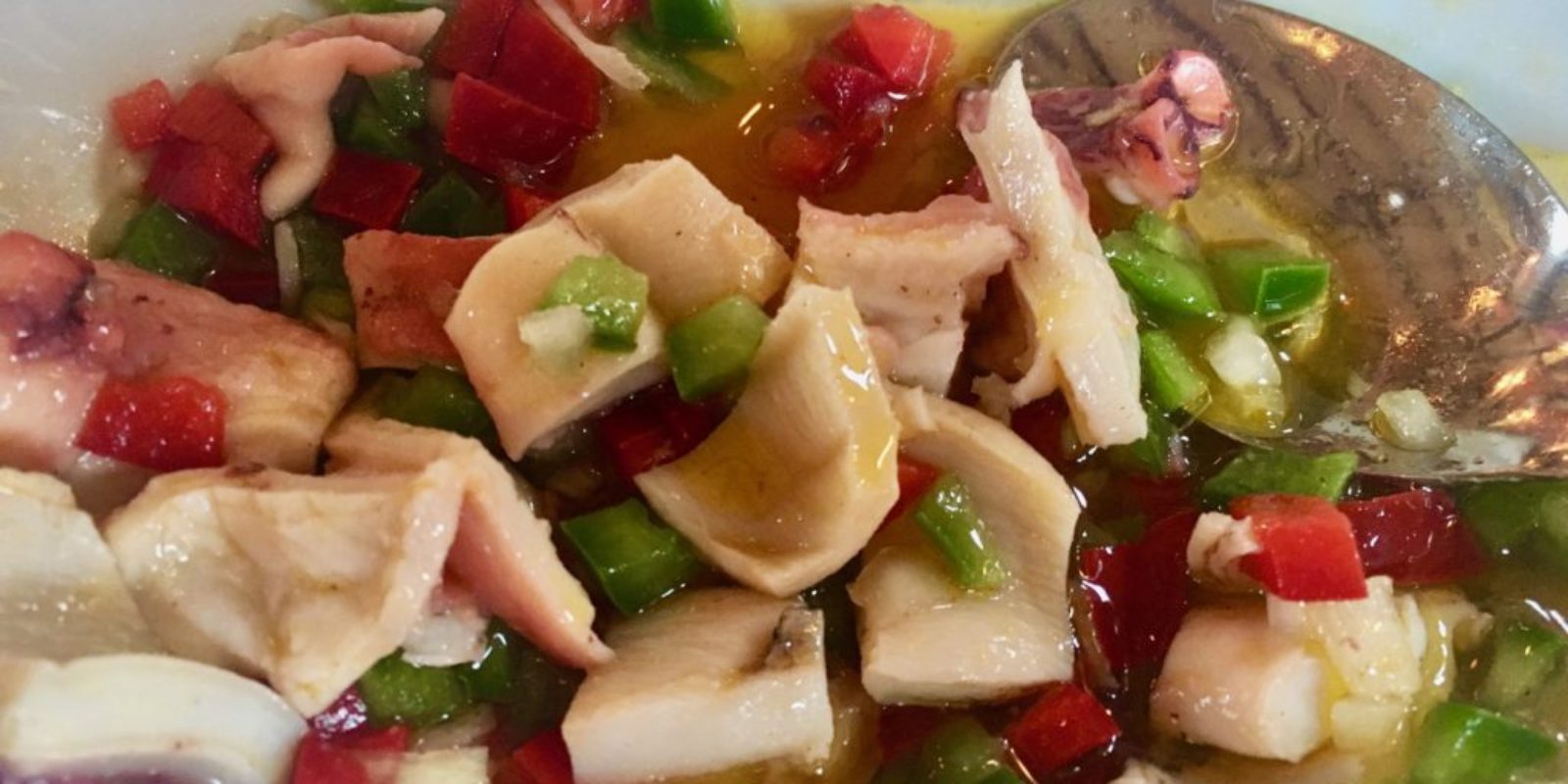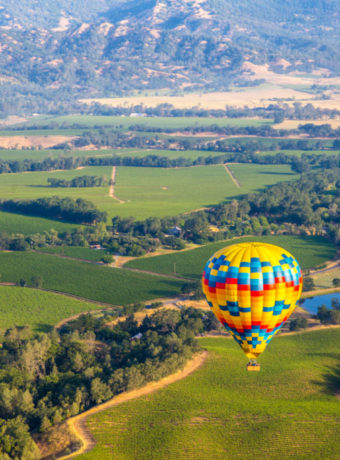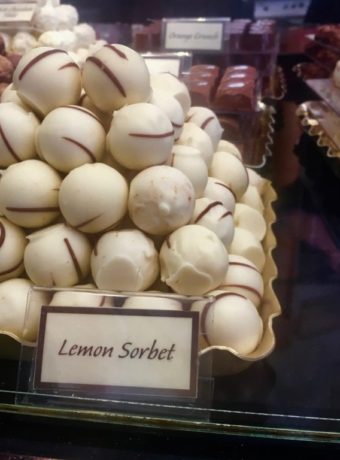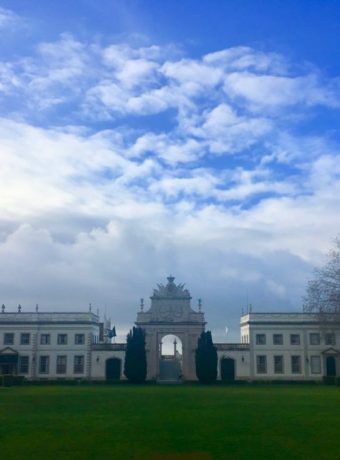At last, the long awaited food and wine in Portugal post I promised is here. During my week long trip through Portugal, we tasted a wide variety of foods, like fresh seafood and Iberian pork, and sipped more than our fair share of port! Food and wine in Portugal has definitely enjoyed a revitalisation. A colleague with me on the trip mentioned her backpacking trip through Portugal in the 1990s. Her recollection of the food was “fried, greasy, and not very good.” I’m here to tell you that I saw very little fried food! From what we dined on in Porto to the various wine regions across the slim country, here’s what you need to know.
food and wine in Portugal
As with so many other Southern European countries, Portugal has perfected the art of eating simple yet delicious foods. At every meal, we had freshly baked bread – some with sundried tomatoes, olives, or herbs, others white or multi-grain. The olive oil we tried was often locally made. Most of the fish we ate had been caught that day, especially in Lisbon and Porto. And while we certainly had elaborate meals (3, 4, 5 courses!), none of the food took hours to prepare. Of course there are things like bacalhau, salted cod, and sardines – preserved fish that can be eaten anytime of year.

The other thing that struck me was that the produce was fresh and flavourful. Of course, with so much sun and rain, the climate in Portugal is perfect for growing olives, wine grapes, fruit, squash, tomatoes, cucumbers, herbs, and more. Some of the hotels we stayed at had their own kitchen gardens. This is a concept I am 1000% behind! Also, Six Senses Douro Valley has more than a garden – they have an Earth Lab. (In fact, all Six Senses have an Earth Lab – you can read more about it here.)

Of course, we can’t talk about food and wine in Portugal without talking about the wine. Many Americans know about Vinho Verde and port, a sweet red dessert wine. But there’s excellent red wines as well as white and rose ports. I’ll get to that later!
If you know me personally, you know I love to cook. I’m not great with recipes – even following one I can’t make pizza dough to save my life. But simple dishes, like octopus salad, tomato rice, or stewed fish, make my mouth water. Therefore, I can say with complete honesty that I loved every bit of the food and wine in Portugal!
Porto

From the moment we arrived at the gorgeous The Yeatman to the time we left the Intercontinental, there was food and wine at our disposal. Because I arrived so early, I opted for lunch on the terrace with another traveller. After travelling for so long, I decided to order a sandwich, which was huge. It came with a salad and fries… and this was definitely the most American thing I ate all week. However, the contents of the sandwich were Iberian pork which is true Portuguese delicacy. That evening, the chef at the two-Michelin starred Yeatman Restaurant pulled out all the stops on a beautiful menu featuring octopus, beef, port, and Douro Valley wines.

For lunch the next day, our host Madalena took us to a charming restaurant in a nearby fishing village a short drive from the city centre. We actually took a little boat across the river rather than drive over the bridge. While we waited for our driver we met Lola, a grizzled fisherwoman with a mesh bag full of lamprey eels. Don’t say I didn’t warn you that the seafood is fresh!
At Armazem do Peixe, our lunch stop, we had a table full of delicious food. We let Virginia and Madalena choose, and I don’t think any of us were disappointed! There was octopus salad, a medley of mussels, steamed clams, and huge prawns, a tomato stew of monkfish with prawns, beef, tomato rice, and several bottles of Vinho Verde. That evening, we dined at the Intercontinental Porto. Once again, the menu consisted of fresh breads, local olive oil, and Douro Valley wine alongside simple dishes packed with flavour.

the north and the Douro Valley
As we drove north and west in toward Vidago and Guimaraes, we sampled more of the simple country dishes. In Guimaraes, our guide Joana pointed out pastries in a bakery window. There are two pastries made here in that aren’t produced anywhere else in Portugal: the tortas de Guimarães and toucinho do céu de Guimarães.

Lunch at Casa de Sezim, a 14th century winery that has never left the original family, was a very simple baked rice with duck. While this was definitely the simplest meal we had – a selection of local wines with the rice and freshly baked bread, it was no less delicious than any other.

The food became richer and heavier as we continued further east. The tenants of balanced flavours and fresh products remained, however. During our day in the Douro Valley, we dined first at the Quinta de Pacheca. Here, I think I had my first fried dish – a homemade take on a sausage roll. The flaky pastry was incredibly buttery and literally fell apart on my fork, while the sausage and mushrooms were so succulent. And despite the two hour drive from the sea, we had a gorgeous freshly caught cod, with a potato au gratin and a light cornbread crust.

Dinner, at Six Senses Douro Valley, was divine. We’d had very little in the way of salads, but at this property renowned for its focus on health and sustainability, we had a lovely salad with fresh veggies and a light vinaigrette.
Central Portugal
We didn’t really spend a ton of time in the central regions of Portugal, but we did stop for a tour and lunch in Tomar. Tomar is near Coimbra, the first capital of the kingdom of Portugal, and a major university town. There’s a lot to do in Coimbra, which has a well-preserved Medieval town centre. There’s a lot to do in Tomar too, namely explore the large castle ruins adjacent to the Convent of Christ, and visit the intact Roman aqueduct that you can still walk across. Tomar was also the headquarters of the Knights Templar and has the oldest synagogue in Portugal.
In Tomar, we dined at a small restaurant in the Jewish quarter. Though they are typically closed on Mondays, they opened for us. It was another simple meal, but again – powerful flavours. We began with fresh salads, olives, queijo fresco (fresh cheese), and bread right from the oven. Our main dish, though, was the popular Piri Piri. This delicious meal is simple: marinated chicken coated with a herby, peppery spice rub.
Lisbon
And, finally, we made it to Lisbon. We rolled in, literally, full of great food and great wine. What could we find here that we hadn’t had anywhere else?!
Dear readers, we had a smorgasbord of delicious food everywhere we went. Our first meal was at Bairro do Avillez, a fantastic restaurant in the heart of the Bairro Alto district. It’s a great little tapas style place with various seating areas. We had a large table in the back room under a huge skylight. The building itself was very Victorian, with wrought iron details, while the interior style and branding was fresh and modern. There is a nearby restaurant with a similar feel that our guide, Jorge, pointed out to us. Bairro do Avillez makes a great lunch destination, but there are plenty of great options in this area.
Did you miss my hotels in Portugal posts? Read about Lisbon, Portugal hotels here!
Both our lunch and dinner on the first day in Lisbon were sharing meals. Dinner, at the Pousadas de Lisboa RIB restaurant, was an array of sharing dishes, mainly meats. This style, popularised by the Brazilian churrascaria, is a modern take on the Spanish tapas. Plates of grilled meat came out accompanied by a fresh tomato salad and spicy potatoes.
Our last lunch, at the Lapa Palace, was one of the lightest we’d had. The first course was a wonderfully cooked egg with spinach and zabaione with truffle cream. I’d never heard of this but after tasting one bite I knew I wanted more. Here we also enjoyed pan-seared snapper. For our Last Supper at the Four Seasons, we savoured a five course meal. From soup to salad to fish to meat and finally, dessert, we did not go hungry at all.
breakfasts in Portugal
As our breakfast at all of the hotels was included, we were free to sample whatever we liked from the bar. In general, the breakfasts were comparable across the board. There was the usual cereal selection, yogurts, juices, fresh fruits, and pastries. There were also wide varieties of cheeses, cured meats and fish, fresh breads, smoothies, and more. Chefs were on hand to prepare eggs however we liked them. I tended to opt for smoked salmon with fresh bread alongside a little fruit.
Some breakfasts were admittedly more lavish than others. At The Yeatman, I passed a champagne and caviar bar. (Just in case that’s your usual breakfast.) The Four Seasons Lisbon, by contrast, also had a beautiful selection of honeycomb near the jam and pastries. And, should you be craving some miso soup, they offer a large Asian breakfast table filled with delicacies from Thailand, Japan, China, and Korea.
desserts in Portugal
Every meal was accompanied by dessert, trust me it did not matter the time of day. In fact, with most meals, there was a traditional plated dessert (fruit with sorbet, chocolate torte) and then little truffled or petit fours with coffee.
The Portuguese do love their chocolate (I brought some home with me), and with the variety of fresh fruits available, there are numerous dessert options. However… there is one famous sweet dish in Portugal.
pastel de nata, a famous Portuguese pastry
At both The Yeatman and the Intercontinental, staff gifted us with creamy pastel de nata, a famous Portuguese pastry. Over the course of the week, we tried a fair number of these egg custard pastries, often sprinkled with cinnamon.
In Lisbon, Jorge took us to Antiga Confeitaria de Belem, the bakery where these delights are churned out for hordes of hungry people. There is always a line, and the inside is crowded with tables. This is not to say it’s a tourist trap. No, far from it in fact. This bakery has been around for over 200 years, only 6 people know the recipe, and even the locals come here for their pasteis. Highly recommended!
wine regions of Portugal
Did you know there are over 25 demarcated wine regions (DOC) in Portugal? To be quite honest, I didn’t know exactly how many there are until I started researching. There are hundreds of varietals as well, some not found anywhere else in the world.
We certainly tried a lot of Douro Valley wines, although in Sintra we drank Colares wine. The Douro Valley is the oldest demarcated wine region in the world. It’s not the oldest wine – the Ancient Greeks made wine – but it is the oldest recognised wine region. The Douro produces a vast amount of wine, mostly red, with a huge number of different varietals.
The Douro is a UNESCO World Heritage Site, and absolutely 1000% should be on your list of places to visit in Portugal. A tour of the Douro Valley, tasting various wines, meeting winemakers, and enjoying some of the decadent food, is well worth the time and money spent.
Vinho Verde is another DOC, although many people think of it as a varietal. It isn’t; it translates to “green wine” and is typically a white although there are reds and roses produced in this region. A Vinho Verde wine is slightly effervescent, but not as bubbly as a true sparkling wine. Alvarinho, similar to the Spanish Albarino, is a wonderful white grape varietal grown in Vinho Verde.
Ports of Portugal
Port is most commonly produced in the city of Oporto, or Porto, in the north of Portugal. Most port is a blend of grapes, striving for consistency rather than differences between bottles. However, when a year is uncommonly exceptional, port wineries produce vintages. This is when you’ll see a year listed on a port bottle.
And, contrary to popular belief, port is not just a red wine; it can be white or rose. On our first evening, we were treated to Port and Tonic, a delightfully refreshing cocktail made with rose or white port and tonic. We sampled a wide variety of port alongside dessert and at every meal had a selection of both white and red wines.
**
As a recap, the food in Portugal is incredible, the wine is sensational, and the hospitality is sublime. Whether you’re in Portugal for an adventure (check out my adventure bucket list here!) or for a leisurely food and wine vacation, take some time to sample the culinary delights of this tiny country.
Let me help you plan the most amazing Portugal vacation! Not ready to experience the amazing food and wine in Portugal? Pin this >>> for future reference!



















